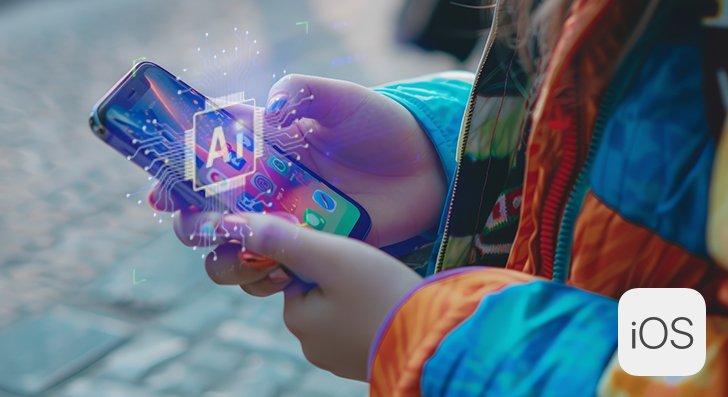
Best Practices: Building Better Apps with Accessibility in iPhone App Development
- Sep 04, 2024
- | 17
Have you tried using your mobile application with both eyes closed? That's what people with impaired vision feel. Individuals with impairments in vision, auditory, motor, and cognitive abilities may have trouble using mobile apps that are not crafted with accessibility in mind. Making mobile apps accessible with the help of an iPhone app development company allows individuals to use the app effectively, regardless of their special abilities.
In this post, we'll explore the best practices to make iPhone apps accessible. The article also uncovers the key features and benefits of accessible design in iPhone app development. So, let's explore with no further delay.
Best Practices for Accessibility in iPhone App Development
1. Use Descriptive Labels
Providing clear and descriptive labels for all user interface elements is crucial. This helps users understand the purpose of buttons, icons, and other controls.
- Ensure each button and icon has a specific label.
- Use simple, easy-to-understand words.
- Avoid vague terms; be clear about the action.
- Test labels with real users to ensure clarity.
- Update labels based on user feedback if needed.
2. Allow Dynamic Text Size
Supporting dynamic text size lets users change font sizes to what they prefer. This makes reading easier for everyone.
- Use system fonts that automatically adjust the size.
- Test your iPhone app with different text sizes to make sure it's readable.
- Avoid fixed font sizes that are difficult to change.
- Provide options for users to change text size in iPhone app.
- Make sure all UI elements are still accessible with larger text.
3. Support VoiceOver
VoiceOver is an inherent screen reader for iPhones. Supporting VoiceOver helps visually impaired users access iPhone applications.
- Enable VoiceOver for all interactive parts.
- Provide spoken feedback for user actions.
- Use accessibility traits to describe controls.
- Test your iPhone app with VoiceOver to make sure it works properly.
- Include hints for gestures and actions.
4. Simplify Navigation
When designing the UI, you should make sure that users move through your iPhone app without getting lost.
- Use clear and consistent navigation menus.
- Make sure buttons are large enough to tap easily.
- Provide back buttons and clear paths to return to previous screens.
- Avoid using complex gestures that may be tricky for some users.
- Test navigation with users of varying abilities.
5. Ensure Color Contrast
Good color contrast between text and background is important for users with impairments. It improves readability and accessibility.
- Follow color contrast guidelines to make sure it's visible.
- Use tools to check the contrast ratios between text and background.
- Avoid using color alone to show information.
- Provide alternatives like text labels for color-coded parts.
- Regularly check your iPhone app's color scheme for accessibility.
6. Implement Accessibility Features
Use iOS accessibility features to improve user experience.
- Enable features like switch control for users with mobility issues.
- Use haptic feedback to provide physical responses to actions.
- Offer captions for videos and audio descriptions for media.
- Allow users to customize their accessibility settings.
- Regularly update your iPhone app to include new accessibility features.
7. Test for Accessibility
Regular accessibility testing helps you make sure the iPhone app works for all users.
- Use tools like Xcode's Accessibility Inspector for accessibility testing.
- Conduct manual testing with users who have disabilities.
- Gather feedback to identify areas for improvement.
- Fix any accessibility issues before launching your iPhone app.
- Make testing for accessibility a routine part of development.
Key Accessibility Features for iPhone App Development
| Accessibility Feature | Description |
| VoiceOver | A screen reader that reads aloud text and describes elements on the screen for blind users. |
| Zoom | A tool that makes things appear big on the screen for better visibility. |
| AssistiveTouch | A feature that helps users control their device through touch gestures. |
| Siri | A voice assistant that allows users to perform tasks using voice commands. |
| Live Speech | Converts typed text into spoken words, allowing users to communicate verbally during calls or conversations. |
| Switch Control | Allows users to control their device using external switches, beneficial for those with limited mobility. |
| Text Size and Display Settings | This allows users to change the text size, contrast, and colors to make reading easier. |
Benefits of Accessible Design in iPhone App Development
1. Broader User Base
Making your iPhone app accessible allows more people to use it. This means your app reaches a larger audience.
- Attracts users with visual, hearing, or mobility impairments.
- Targets older adults who may have difficulty with technology.
- Expand market reach, leading to more downloads.
- Increases potential customer engagement and loyalty.
2. Improved User Experience
Accessible design provides a better overall experience to all users. It simplifies navigation and makes the app easier to use.
- Clear labels and instructions help everyone understand the app.
- Simplified interfaces reduce confusion for all users.
- Consistent design elements make navigation user-friendly.
- Enhances usability for people new to technology.
- Creates a more enjoyable experience for all users.
3. Positive Brand Reputation
Creating accessible iPhone apps shows that a brand cares about all users. This enhances the brand's reputation and attracts more customers.
- Builds trust with users by showing commitment to inclusivity.
- Positive reviews and ratings improve visibility in app stores.
- Enhances the brand’s image as customer-focused and responsible.
- Builds a long-term relationship with users who appreciate inclusivity.
4. Cost Savings
Accessible app design helps companies save money in the long run.
- Reduces the need for major design changes post-launch.
- Saves time and resources by addressing accessibility early.
- Minimizes the risk of extensive testing for compliance.
- Helps avoid customer complaints and support costs.
- Streamlines the development process, leading to faster releases.
5. Enhanced Innovation
Focusing on accessible app design uncovers new ideas and features that benefit all users. This encourages creativity in iPhone app development.
- Challenges developers to think outside the box.
- Encourages the creation of unique features that appeal to everyone.
- Promotes the use of new technologies and tools.
- Drives innovative solutions that enhance functionality.
- Keeps the mobile app relevant in a competitive market.
Summing Up
Ultimately, app accessibility is not just a checkbox to tick off, it's a way to create a more inclusive experience for everyone. So, let's make it a priority in your app development initiatives by partnering with an iPhone app development services provider.





